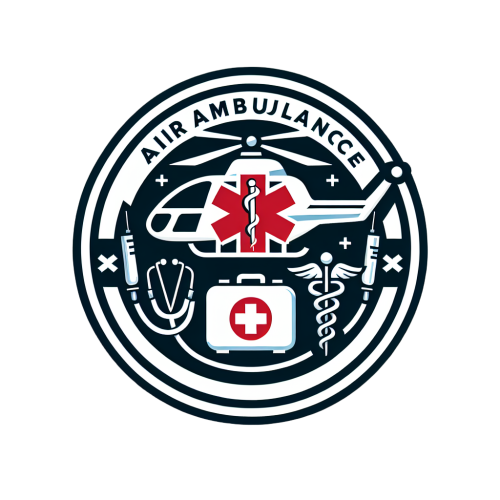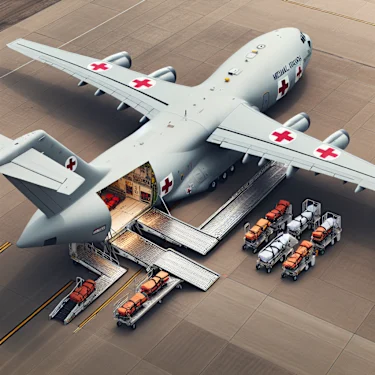med evac plane
Comprehensive Insights into Med Evac Planes: Understanding Their Role, Operations, and Impact on Emergency Medical Services
This article delves into the critical role of medical evacuation (med evac) planes in emergency medical services, exploring their operational frameworks, technological advancements, and the impact they have on patient outcomes.
Readers will gain a comprehensive understanding of how these aircraft function in urgent situations, the logistics involved in airlifting patients, and the collaboration between medical teams and aviation professionals.
Through detailed insights and practical guidance, this piece aims to illuminate the significance of med evac planes in saving lives and enhancing healthcare accessibility.
The Essential Role of Med Evac Planes in Emergency Medical Services
Definition and Purpose of Med Evac Planes
Medical evacuation (med evac) services are critical components of emergency medical services (EMS), designed to transport patients who require urgent medical attention. Med evac planes play a vital role in these services, providing rapid response capabilities that can significantly improve patient outcomes in life-threatening situations.
The importance of rapid response in emergencies cannot be overstated; every minute counts when it comes to saving lives. Med evac planes are equipped to reach remote or inaccessible locations quickly, offering a level of care that often surpasses that of ground ambulances. Unlike ground ambulances, which may be hindered by traffic or geographical barriers, med evac planes can bypass these obstacles, ensuring that patients receive timely medical intervention.
Types of Med Evac Aircraft
Med evac aircraft can be categorized into two primary types: fixed-wing aircraft and rotary-wing aircraft. Fixed-wing aircraft, such as those operated by air ambulance services, are typically used for long-distance transport, while rotary-wing aircraft, like helicopters, are ideal for shorter distances and can land in more confined spaces.
Specialized features of med evac planes include advanced medical equipment, such as ventilators, monitoring systems, and a cabin layout designed for optimal patient care. Commonly used med evac planes in the industry include the Beechcraft King Air and the Bombardier Learjet, both of which are equipped to handle various medical emergencies.
Operational Framework of Med Evac Services
The Med Evac Process
The med evac process begins with an initial assessment and dispatch protocols initiated by emergency medical services. Once a medical emergency is reported, EMS teams coordinate with aviation professionals to determine the best course of action. This includes evaluating the patient’s condition and the logistics of the flight.
Coordination between EMS and aviation teams is crucial for ensuring a seamless operation. Flight preparation involves stabilizing the patient and preparing the aircraft for takeoff, which includes checking medical equipment and ensuring that all necessary supplies are onboard.
Logistics and Challenges in Med Evac Operations
Several factors influence flight decisions during med evac operations, including weather conditions, distance to the destination, and the patient’s medical condition. Regulatory and safety considerations are paramount in air medical transport, as compliance with aviation regulations is essential for safe operations.
Communication technology plays a significant role in enhancing operational efficiency. The use of cockpit voice recorders and advanced communication systems allows for real-time updates and coordination between ground and air teams, ensuring that all parties are informed and prepared for the mission.
Technological Advancements in Med Evac Planes
Innovations Enhancing Patient Care During Transport
Recent advancements in medical technology have greatly enhanced patient care during transport. Advanced medical equipment and monitoring systems onboard med evac planes enable healthcare professionals to provide critical care while in transit. Additionally, telemedicine capabilities allow for real-time consultations with specialists, ensuring that patients receive the best possible care during their flight.
The impact of technology on patient outcomes and recovery times is significant. Studies have shown that timely medical intervention via air medical transport can lead to improved recovery rates and reduced mortality.
Future Trends in Med Evac Aviation
The future of med evac aviation is poised for innovation, with emerging technologies in aircraft design and functionality. The integration of drones in medical transport is an exciting development, potentially allowing for quicker delivery of medical supplies and equipment to remote locations.
Predictions for the evolution of med evac services in the coming years include increased automation and enhanced capabilities, further improving the efficiency and effectiveness of air medical transport.
The Impact of Med Evac Planes on Patient Outcomes
Case Studies
Notable examples of lifesaving med evac missions highlight the critical role these aircraft play in emergency medical services. Case studies demonstrate the effectiveness of air medical transport in improving patient recovery rates post-evacuation. Testimonials from patients and healthcare professionals underscore the importance of med evac planes in providing timely and effective medical care.
Enhancing Healthcare Accessibility Through Med Evac Services
Med evac planes play a crucial role in enhancing healthcare accessibility, particularly in rural and underserved areas. By collaborating with hospitals and healthcare systems, these services ensure that patients receive the care they need, regardless of their location.
Public awareness and education regarding med evac services are essential for maximizing their impact. Programs such as air ambulance membership programs can provide individuals with access to these critical services, ensuring that they are prepared in case of an emergency.
Medevac flight cost
The cost of a medevac flight can vary significantly based on several factors, including the distance to the medical facility, the type of aircraft used, and the specific medical services required during transportation. Typically, these flights can range from a few thousand to tens of thousands of dollars. Health insurance may cover some or all of the costs, but this depends on the individual policy. It is advisable for individuals to review their insurance coverage and plan ahead when considering medevac services, as understanding the potential expenses can prevent unexpected financial burdens during a medical emergency.
Medical Plane Transport
Medical plane transport is a critical service that facilitates the rapid transfer of patients requiring urgent medical attention, particularly in remote or underserved areas. Equipped with advanced medical technology and staffed by highly trained personnel, these aircraft can provide life-saving care during transit. This service not only ensures timely access to specialized treatment but also enhances the overall efficiency of healthcare delivery systems. In emergencies where every second counts, medical plane transport plays an invaluable role in saving lives and improving patient outcomes.
By streamlining the transportation of individuals in need of immediate care, this service bridges the gap between local facilities and advanced medical centers, thereby enhancing the overall effectiveness of emergency medical services.
Medevac helicopter
Certainly! However, it seems like the paragraph regarding the “Medevac helicopter” is missing from your request. Please provide the original paragraph you’d like me to revise, and I’ll be happy to assist you in enhancing its clarity and coherence.
Conclusion
In summary, med evac planes are indispensable assets in emergency medical services, providing rapid response capabilities that save lives and improve patient outcomes. As technology continues to advance, the future of med evac operations looks promising, with the potential for enhanced services and increased accessibility to healthcare.
Readers are encouraged to support and advocate for improved med evac services, recognizing their vital role in our healthcare system. By understanding the significance of these aircraft, we can work towards ensuring that everyone has access to the emergency medical care they need.


